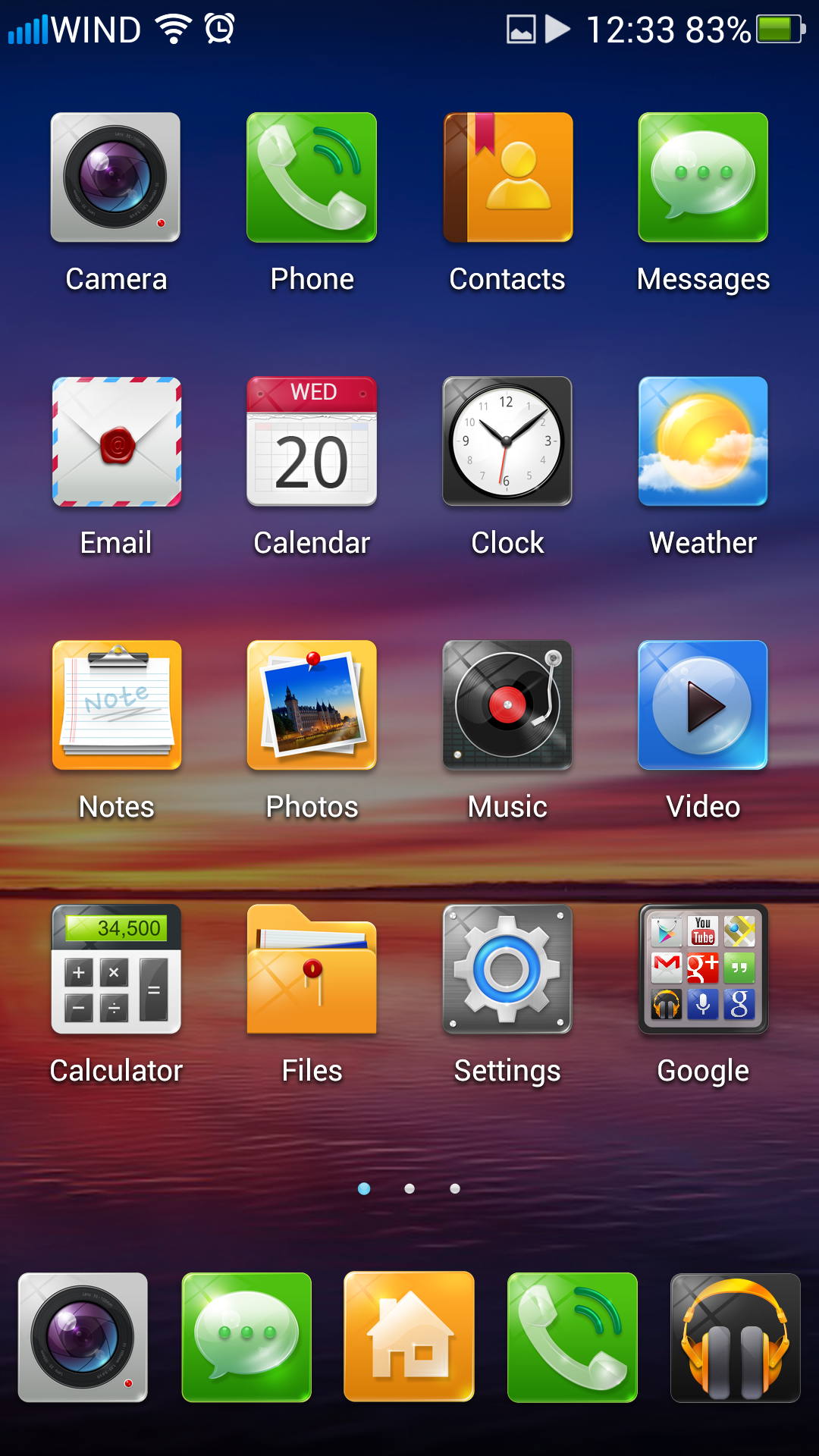Oppo Find 5 Review: A Phone Of Firsts From A Brand To Watch
Has a relatively unknown Chinese manufacturer of high-end home theater equipment actually created a flagship Android smartphone capable of going head to head with the industry's established heavyweights? We take Oppo's S4 Pro-powered Find 5 for a spin.
Default ROM And Supported Alternatives
Default ROM
We’re generally not fans of most custom manufacturer skins or overlays, and the Find 5’s unique version of Android 4.1.1 Jelly Bean is not in the rare category that offers a better experience than stock Android.
The Find 5’s custom skin takes a number of design cues from the popular MIUI series of ROMs and the iconic (pardon the pun) Faenza icon set used in many Linux distributions. Bizarrely shaped widgets aside, it actually looks quite good. The handset’s software also incorporates a number of useful features, such as a native NFC configuration tool, easily customizable notification LED, and “Easy Answer”, which uses the proximity sensor to automatically answer calls when the phone is placed next to your ear.
This attempt to differentiate the UI is, however, completely overshadowed by the ROM’s perceptible sluggishness and frequent frame drops, which are most noticeable when scrolling through the home screens and unlocking the “Glassboard” lock screen. Considering the capable hardware powering the Find 5, poor firmware optimization seems to be the most likely explanation.
Moreover, the ROM’s glossy visual design could reasonably be offered as the dictionary definition of incoherence. Its colorful MIUI-esque applications and widgets significantly clash with the bundled stock Android programs that utilize Google`s increasingly flat and monochromatic “Holo” design guidelines. This issue is demonstrated most plainly with the iconography, which includes some admittedly well designed icons for a handful of common programs, but adds a gray background to everything else in order for the interface to have a consistent set of square icons.
Supported Third-Party ROMs
What ultimately redeems the Find 5 is the company's exemplary support for the third-party development community. What’s more, the Find 5 is bootloader-unlocked right out of the box, fully GPL-compliant, and comes with an explicit guarantee that modifying the device’s software will not void the warranty.
The net result of this support is that the Find 5 sees considerable aftermarket development on both Oppo's official forums and XDA-Developers, and currently has official builds from AOKP, CyanogenMod, Paranoid Android, MIUI, and even a functional Omnirom port of Android 4.4 Kit Kat. Gadgets, being what they are, cannot have their hardware upgraded, so any tweaking and tuning has to be done in software. Needless to say, this commitment to the enthusiast community is a major selling point in our eyes.
Get Tom's Hardware's best news and in-depth reviews, straight to your inbox.
Current page: Default ROM And Supported Alternatives
Prev Page Internal Hardware, Cameras, And Audio Next Page Test Setup And Benchmark MethodologyTarun Iyer was a contributor for Tom's Hardware who wrote news covering a wide range of technology topics, including processors, graphics cards, cooling systems, and computer peripherals. He also covered tech trends such as the development of adaptive all-in-one PCs.
-
Mr Fender Hey guys, you forgot about their ColorOS - now it's basically the official firmware of OPPO Find5.Reply -
marclee37 I live in Hong Kong ssp, I see there are much many other China brand good looking good quality Android phones- 2gb ram is a norm, 3gb ram started to appear. 1080 screen, 5" screen, 13M cam, these are basic general spec, for price no more than US$320.Reply -
house70 Being unlocked, it is a perfect go-to phone for trips abroad. As far as hardware, the only "downside" is the lack of LTE bands in it's radio.Reply
SOftware is where it lacks, though. I got this because Oppo promised frequent updates to the OS, and TBH the Android-based variant it came with was not too bad of an experience. Then it became clear that the development team does not really know what they're doing (same minor but annoying bugs with every release, now barely coming through with 4.2, etc). They could have given CyanogenMod the kernel and drivers and let them pick up the development. CM-based ROMs are functional, but still plagued by bugs that come from lack of access to proprietary code.
Basically, their approach (at one point there were 2 or 3 versions of ROMs in development, none out of a beta state) stretched them way too thin, and it shows.
Last but not least, ignoring many requests of just embracing AOSP and let the plethora of apps do the rest was not a smart move on Oppo's part. -
danlw As an Audioholic, I have heard of the Oppo name. Their Blu-Ray players are considered by many in the high-end community to be top quality. In fact, Lexicon, a maker of ultra-elite electronics, actually stuck a $500 Oppo BDP-83 inside a new case and sold it for $3,500! (Audioholics: Lexicon BD-30 Blu-Ray Player (Oppo BDP-83 Clone) Review)Reply
With this phone, however, I doubt Apple will stick it inside their own chassis and call it ther own. It is mildly interesting, but as is often the case, forays into new market segments by otherwise high quality manufacturers are often precarious.
By all means, get an Oppo Blu-Ray player. As far as the phone, they need to get through their growing pains. -
programit Why isn't the phone compared to current versions of others. I see you put it against the latest iphone and a 16 month old dates Samsung S3. Why not the S4 or Note3 which are current models and hence what it is up against.Reply
It seemed a bit biased and not truly giving a comparison with current market phones. -
nebun got to love the iPhone 5s....like it or not....it's the best all around...the benches speak for themselves...did it mention "NO CRAPWARE and FAST OS UPDATES"Reply



